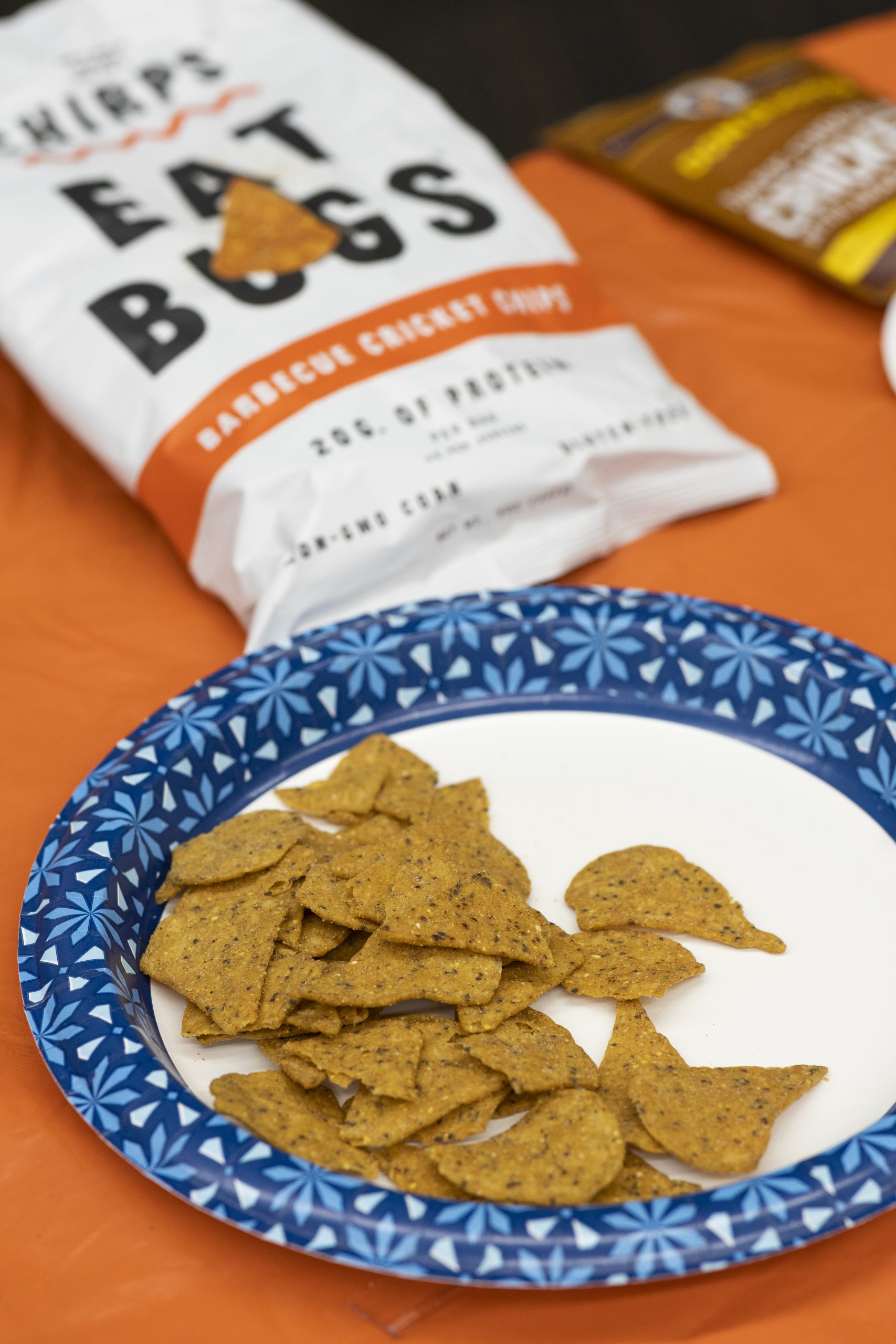Trick or treat, and take your pick: a chocolate-covered cricket or a waxworm caterpillar?
Even though Halloween is a time to eat candy, it’s also an opportunity to try creepy crawlers like crickets, grasshoppers and mealworms.

Rebecca Baldwin, an associate professor in the UF/IFAS department of entomology and nematology, teaches a class about the relationship between bugs and people (ENY1001) with a lecture dedicated to giving students the opportunity to try eating insects.
Entomophagy is the practice of eating insects. In recent years, eating bugs has become more popular in the U.S. as more people learn insects’ nutritional benefits and incorporate them into their diet.
But the practice of eating insects by people isn’t new and can be found all over the world.
From Mexico to Cambodia to Japan, eating insects is the norm, and insect-based treats can be found in street carts or movie theatres. Baldwin explains that 80% of the world eats insects as they are a great source of protein.
Insects can be high in fat, fiber and vitamins like calcium, zinc, B12 and iron, making their nutritional value even more enticing. Additionally, “Insects can be raised in small spaces and are great at converting food to body mass, so they make for a sustainable protein source with a small environmental impact,” said Baldwin.
However, it’s important to note that the nutritional value varies depending on the insect and its maturity.
“For starters, you usually want to eat bugs when they’re nymphs or larvae, or the immature stage between being an egg and an adult,” Baldwin said, “because once they reach adulthood, they have a lot of chitin which isn’t as suitable for digestion.” Chitin is a hard substance that makes up the main component in insects’ exoskeletons.

If eating an insect whole isn’t appealing, never fear: There are products such as protein bars and tortilla chips that include bugs as an ingredient.
Sarah Tafel, the president of the University of Florida’s entomology club, says it’s much easier to swallow insect products when their form has been modified.
“It’s easier to start eating insects when you don’t see that it’s an insect,” Tafel said.
Live insects and insect-based products can be easily found and purchased online. Additionally, live insects can be purchased in person at reptile or pet stores.
But for those who still feel an ick factor associated with eating insects, Tafel suggests attending special entomophagy events or visiting Baldwin’s taste-testing class.
“Just give them a try,” Baldwin said, while noting that insects are best when they’re fresh.
For those who feel adventurous and want to try eating some insects in place of Halloween candy this spooky season, Baldwin and Tafel recommend waxworm caterpillars as they’re fatty and sweet.
Other options include mealworm fried rice or chocolate-covered crickets:
Mealworm Fried Rice
- 1 cup mealworm Tenebrio Molitor, live
- Oat bran, enough to completely cover the mealworms
- 1 tsp. oil
- 1 egg
- 3/4 cup water
- 4 tsp. soy sauce
- 1/4 cup chopped onion
- 1 cup Minute Rice, uncooked
- 2 Tbsp. salted butter
- 2 cloves garlic
- “Clean” the mealworms by placing them in a container with oat bran for a couple of days (so everything passes through their gut).
- Heat oil in pan and scramble egg
- Add water, soy sauce and onions. Bring to a boil.
- Stir in rice. Cover, remove from heat and let stand for 5 minutes.
- Meanwhile, in another skillet heat butter, add garlic cloves and brown.
- Remove garlic cloves and sauté mealworms in flavored butter for 2-3 minutes or until soft.
- Add mealworms to rice.
Chocolate-covered Crickets
- 50 crickets, live or dead
- 50 toothpicks
- 1 container of microwaveable dipping chocolate
- “Clean” live crickets by not feeding them for 24 hours before cooking. If you are using live crickets, place them in the freezer overnight to kill them. Rinse crickets, pat dry and spread dry crickets on a cookie sheet. Bake them at 200 degrees Fahrenheit for 1-2 hours. Crickets are done when they are completely dry and crunch easily with your fingers.
- Heat the chocolate in microwave until melted.
- Insert toothpick in each cricket and dip individually in the chocolate.
- Lay dipped crickets on a plate for chocolate to harden.
- Eat and enjoy!
 13
13
